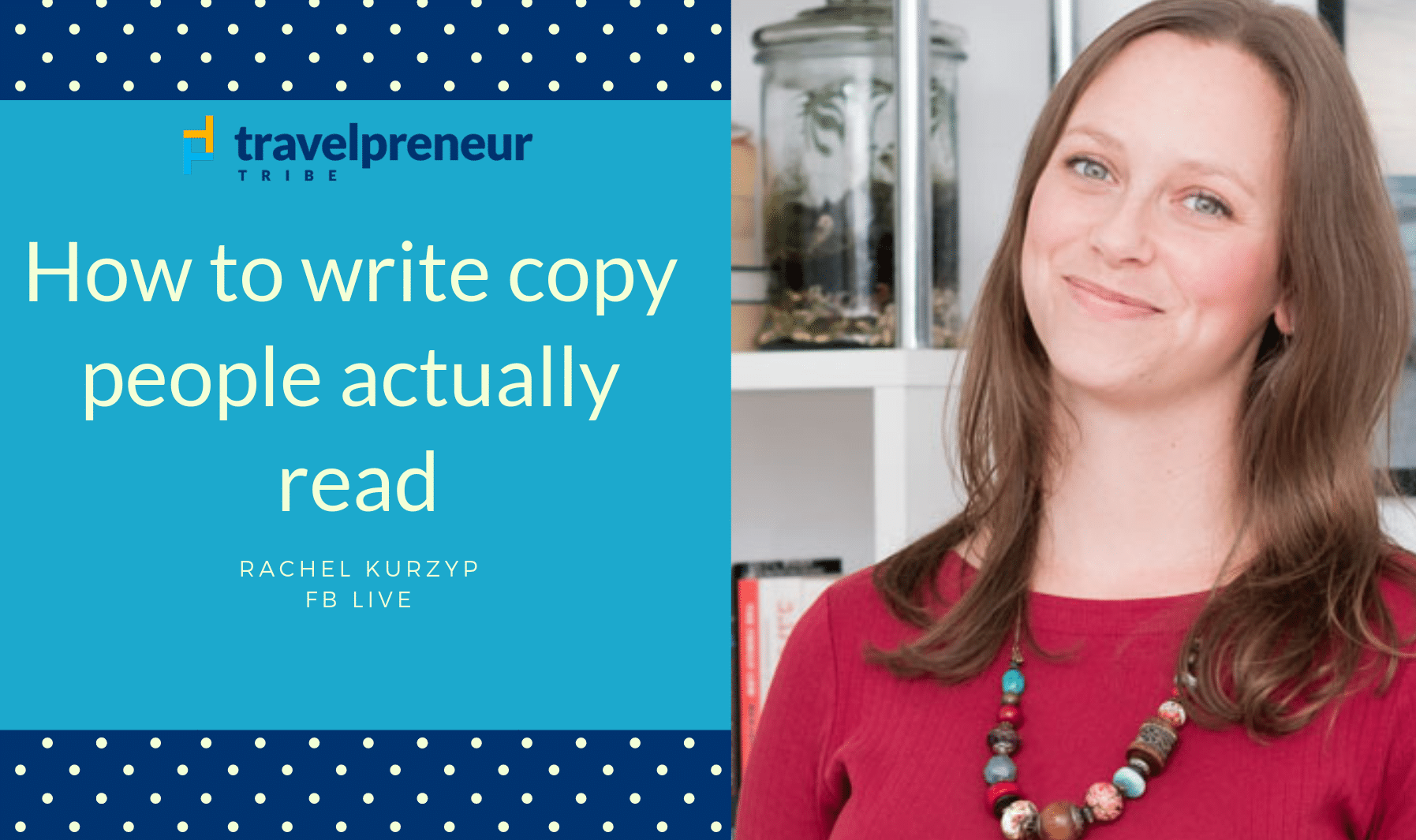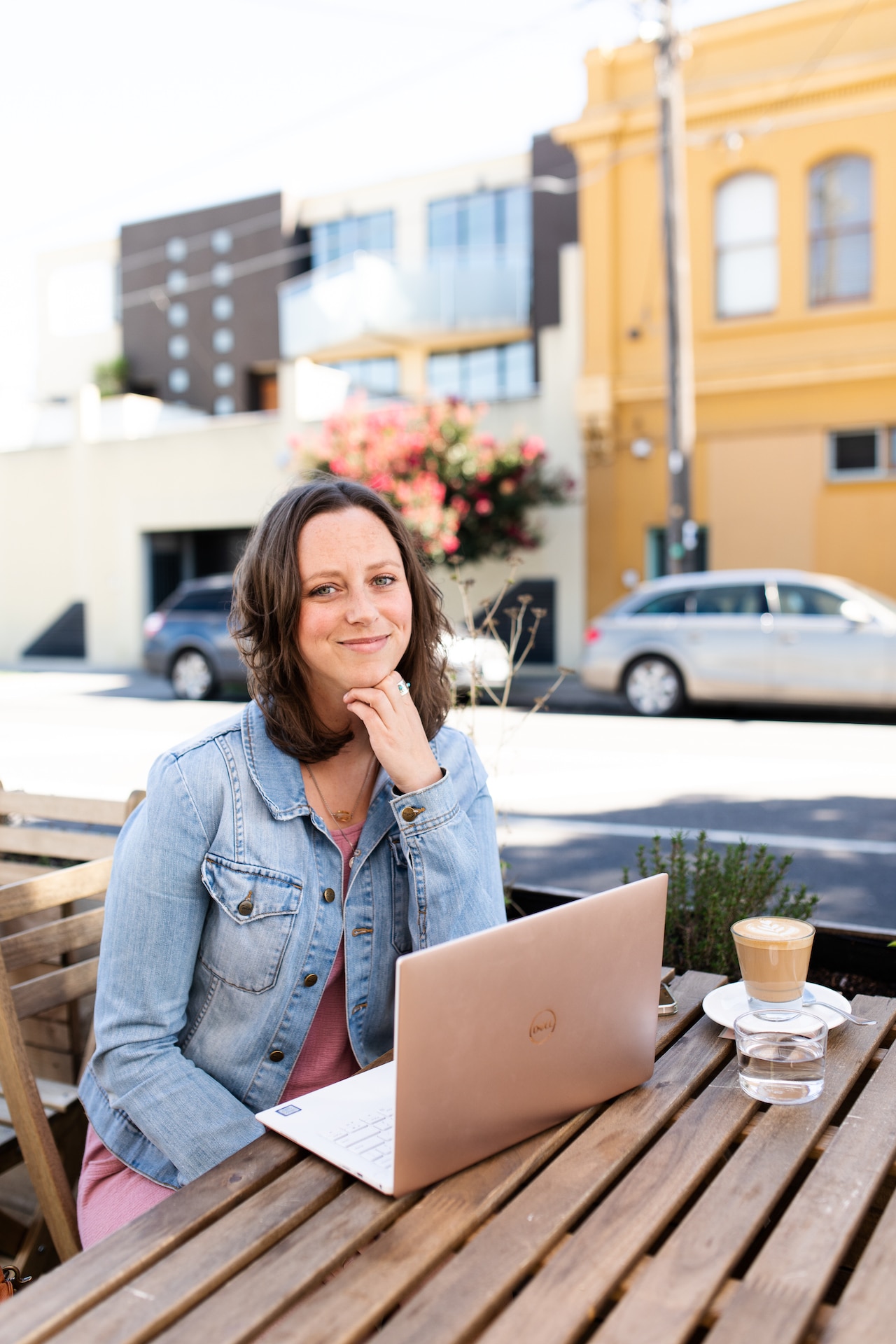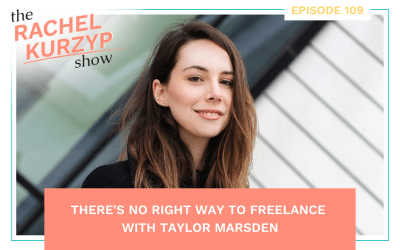Today I spoke with Mia Scuric from Travelpreneur Tribe about the four common marketing mistakes we all make and how to fix them.
I also shared all my best editing tips, tools I use to write great copy, and why everyone needs to get over their fear of writing (me included)!
If you have a love-hate relationship with words you need to give this video a watch.
Here are my best tips for writing searchable, bold and hardworking content that makes your audience stop and take notice.
1. Know who you are speaking with
The first thing that most commonly business owners, both large corporations and small ones, is they don’t actually know who they’re talking to. I’ll say you’ve heard all these words like “niche” and “target market” your “ideal customer, ideal client,” and although it sometimes feels like you’re hearing it all the time and it’s not that important, it actually really is.
When talking to clients ask “who are you really trying to sell to, who is your ideal client, who would you love to work with?” A lot of them actually say to me “anyone over 18-55 with a credit card” and I say this with love, but I’m like “that’s not going to work for you, we’re going to need to narrow that down” and we need to get so specific that we can actually imagine a person sitting across from us that we’re talking to when you write our copies.
You need to know everything from what they’re passionate about, where they spend their time, where they spend their time, the problems that they’re struggling with, what they need help with so that they can position their product or service as a solution, as a way to address that problem.
2. Find ways how to get their attention
As you probably know yourself, we’re always scanning things on the internet now, we’re scrolling endlessly, and we’re just bombarded with marketing messages whenever we’re in our car, at work, etc., it just doesn’t stop. We need to figure out a way to get our ideal customers’ attention. A lot of that is to do with headlines, call to action, it has to do with the way that we lay out our copies, the words we use.
On average, five times as many people read the headlines compared to the body copy. So they’re pretty darn important. A great headline convinces people to read your copy while a poor one sends potential customers to someone else’s business. Your headline should try to do at least one of these things: be unique, ultra-specific, convey a sense of urgency, and be useful. Every time you write a headline look over your ideal customer profile and how your product or service solves their problems.
And ask yourself if your readers would be interested and intrigued? If not, re-write your heading until it’s clear, concise and specific.What do you want the reader to do next? Maybe you want them to sign up to your newsletter, or share a resource with a friend. Be clear about what action you want them to take once they’ve finished reading. Then spell it out for them. Don’t assume your reader will know what the next step is. If you’re lucky enough to have an engaged reader you don’t want to waste the opportunity to speak with them further.
3. Learn how to speak their language
All of this is obviously coming from the fact that you need to know who you are as a business, what you do, and your ideal client. Your ideal client, again, if you’re a young, hip makeup brand, you might be talking completely different to a brand consultant who goes out and who’s been in the industry for years. Different words, different style, different tone. So, you need to know how they’re speaking so that it feels like it resonates with them. I don’t know if you’ve ever had this, but you’re reading a copy or an ad, and it’s content in general and it’s like “wow, this is speaking to me, I need to go find this person and buy this thing.”
4. Learn how to write and edit exciting copy
Always start to free-write without editing. Do this when you first sit down to write a new web page, blog, brand document, and so on. Doing this gives you the chance to explore ideas and clarify your thoughts. No one writes a perfect piece first go. And anyone who tells you they do is lying. The main thing is you get your ideas out there and set them down in writing.
The first suggestion is if you’re coming from a background where perhaps you haven’t done a lot of communication, not much writing and you don’t really feel confident, just figure out what’s holding you back. Is it that you’re too fact-heavy and that you like selling facts and figures but you’re not very good at crafting a narrative? Or vice versa? And then just put it all on paper. So, when you think you’ve got the right amount of words, you’ve read it and you’re like “I’ve got my purpose in here, I feel like I’m talking to my ideal client, the world limit is roughly right,” all that kind of stuff, you can move onto editing.
5. Edit for grammar, punctuation, and SEO.
You should always write for your ideal client or humans first, and then the SEO gods. A lot of people hire SEO professionals and their copy sounds like a robot because they’ve just worded stuff. Every writer has their quirks. And with time, you’ll notice what words you spell wrong in your first draft, and what grammar rules you commonly break. Make a note of these so you can double check them when you reach the editing stage.
As a basic rule always remove: extra words, repetition, and reduce prepositions. Always write in an active voice and use positive words where possible. And don’t forget to add important keywords that will help your piece be discovered online. Never edit straight away. Give yourself a day or two before you come back to the piece. Another good one is to remove all jargon and acronyms. So, if you’re one of those people that throw in industry jargon, or that’s just the industry you’re in, remove it.
Even if you’re a doctor and you’re talking about a product and you know that your ideal clients are the doctors or medical professionals that will understand you, remove the jargon. Spell out all the acronyms in full, make it like seventh-grade star copy.
6. Present the information in a digestible way
We need to know how our client or customer digests information, so we do copy dumps where we dump all of the information in and they might find it and they might still be doing PDFs when they’re on Facebook, not using the right images. There is a kind of design and technology that we need to think about now when we’re sort of communicating online, and still face-to-face. Use headings, subheadings, lists, short sentences, images, and embrace white space.
Generally, people don’t read more than the first paragraph. For the most part, this has to do with readability. No one wants to wade through a copy dump to get to the juicy bits. Make it easy for your reader to scan your copy and recognize the important stuff by breaking up the text.
So, these are some of the tips that are easily implemented it just takes a bit of time and a little bit of knowledge. I find that if you address all of those if you’re really clear about who you are, what you do, who your ideal client is, how you help, it just all falls into place. It doesn’t mean you’re starting to become richer overnight because you still have to work, but it just makes it a lot easier.
If you’re after my write copy people actually read e-book mentioned in the video, you can get your hands on it here.
This interview was originally shared on the Travelprenuer Tribe website.





